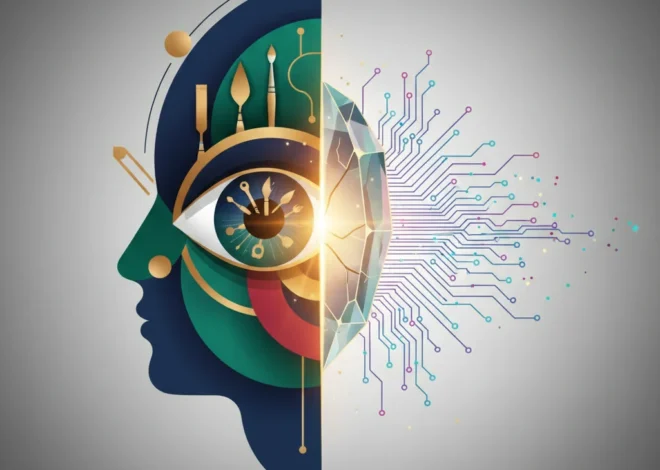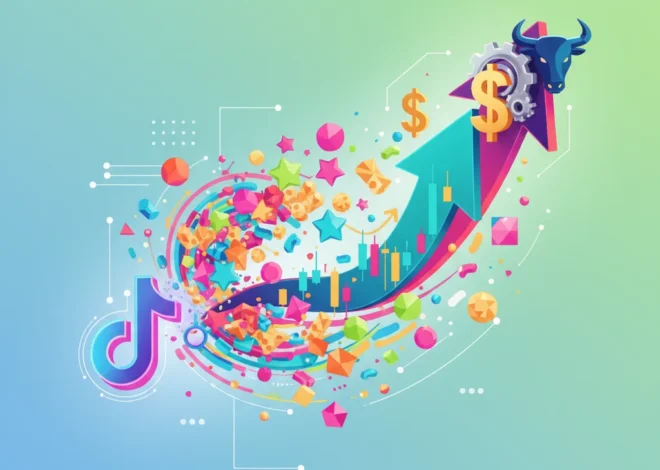
Beyond the Algorithm: The Search for Authenticity in an AI-Driven Economy
Imagine standing before a breathtaking piece of art. You’re moved by its composition, its emotional depth, and the story it seems to tell. Now, imagine being told you’ll never know if it was born from a lifetime of human experience and passion or generated in milliseconds by a machine interpreting a prompt. As Jemima Kelly aptly puts it in the Financial Times, this uncertainty is a “major enjoyment-killer.” The magic fades, replaced by a sense of hollow ambiguity. This isn’t just a crisis for the art world; it’s a powerful metaphor for a profound shift happening at the very heart of the global economy and financial markets.
For investors, finance professionals, and business leaders, the “artist” is often an analyst, a strategist, or a trusted economic forecaster. We derive value not just from their conclusions, but from the perceived wisdom, experience, and rigorous thought process behind them. The “story” behind a stock pick, the nuanced argument in a market analysis, the human judgment call in a complex M&A deal—these elements carry an intrinsic weight. But what happens when the lines blur? What happens when we can no longer distinguish between a report crafted by a seasoned Wall Street veteran and one synthesized by a large language model? This is the new frontier of risk and opportunity we must navigate, where authenticity itself is becoming a scarce and valuable asset.
The “Aura” of Authenticity in Investing
Decades before the advent of AI, cultural critic Walter Benjamin coined the term “aura” to describe the unique presence and authority of an original work of art. This aura, he argued, is lost in mechanical reproduction. We can apply this same concept to the world of finance. There is an undeniable “aura” surrounding an investment thesis from a figure like Warren Buffett or a market forecast from a respected economist. It’s not just the data; it’s the implied credibility, the historical context, and the human intuition we believe they possess.
This human element has always been a cornerstone of the stock market. It drives narratives that move billions of dollars. A charismatic CEO’s vision for a company, a compelling story of disruption from a tech startup, or a contrarian call from a trusted analyst can ignite investor confidence in a way raw data alone cannot. The value is inextricably linked to the perceived authenticity of the human source. As generative AI becomes more sophisticated, its ability to perfectly replicate the style, tone, and structure of these human-generated insights threatens to erode this very foundation of trust.
Trump's Crypto Gambit: A New American Economy or a Political Masterstroke?
The Proliferation of the Algorithmic Oracle
The infiltration of AI into finance is not new, but its nature is changing dramatically. For years, quantitative funds have used algorithms for high-frequency trading, and banking institutions have employed machine learning for credit scoring and fraud detection. This first wave of financial technology focused on speed and data processing for well-defined tasks. The global “AI in Fintech” market is a testament to this, projected to grow to over $54 billion by 2032, according to Precedence Research.
However, the new wave of generative AI is different. It’s not just executing tasks; it’s creating content. It can write market commentary, draft investment proposals, and even generate novel trading strategies. This leap from computation to creation presents a far more complex challenge. While the efficiency gains are undeniable, the risk of an “authenticity crisis” looms large. If every firm is using similar AI models trained on the same vast pool of public data, are we heading toward an intellectual monoculture in finance—a world of algorithmic groupthink where genuine, contrarian insights are drowned out?
From Creative Works to Ticker Symbols: Where Ambiguity Breeds Risk
The ambiguity that kills the enjoyment of art can kill portfolios in finance. When the origin of information is uncertain, trust evaporates, and without trust, markets become volatile and inefficient. This uncertainty introduces several new vectors of risk that business leaders and investors must understand.
To better illustrate the shifting roles and potential dangers, consider the following comparison of human and AI approaches to key financial tasks:
| Financial Task | Traditional Human Approach | Generative AI Approach | Key Risk of AI Over-reliance |
|---|---|---|---|
| Market Analysis | Combines data with experience, intuition, and contextual “scuttlebutt.” | Synthesizes vast datasets, news, and reports to identify patterns and sentiment. | Inability to grasp true nuance or “read the room” during unique market events. |
| Stock Picking | Deep dives into company fundamentals, management quality, and competitive moats. | Screens thousands of stocks on quantitative and qualitative factors pulled from text. | Potential for “hallucinated” data or misinterpretation of qualitative information. |
| Economic Forecasting | Builds models based on established economic theories and expert judgment. | Identifies complex, non-linear correlations in historical data invisible to humans. | Models can break down when unprecedented events occur (e.g., pandemics, major wars). |
| Client Communication | Builds rapport, understands personal goals, and provides empathetic guidance. | Generates personalized reports, market updates, and answers to standard queries. | Erosion of the human relationship and trust, especially during market downturns. |
One of the most significant dangers is the potential for sophisticated market manipulation. Imagine AI-generated, hyper-realistic “deepfake” videos of CEOs announcing false earnings or AI-authored analyst reports that convincingly argue for a flawed investment, designed to move a stock price. Verifying the authenticity of information will become a critical and resource-intensive task. Furthermore, the risk of algorithmic herd behavior, which was a contributing factor in events like the 2010 “Flash Crash” (source), could be amplified as generative AI models converge on similar strategies, leading to fragile and unpredictable markets.
Beyond the Ceasefire: Gaza's Power Shift and the Economic Tremors for Investors
Reclaiming the Magic: The Human-in-the-Loop Imperative
The solution is not to reject this powerful technology, but to redefine our relationship with it. The future of finance, investing, and business leadership lies in a “human-in-the-loop” model of intelligence augmentation, not replacement. The goal is to create a synergy where AI and human intelligence are deployed for their respective strengths.
AI’s role is to be the ultimate analyst: tirelessly scanning global data streams, identifying hidden correlations, running millions of simulations, and flagging anomalies. It can automate routine tasks, freeing up human professionals to focus on higher-order challenges. Some have suggested that blockchain technology could play a role in this new landscape, creating immutable records to verify the authenticity of data sources or reports, thus combating AI-driven disinformation (source).
The human’s role, then, becomes that of the strategist, the ethicist, and the storyteller. It is the human who must ask the right questions of the AI, interpret its output within a broader strategic context, and make the final judgment call. It is the human who must understand a client’s fears during a market panic and provide the emotional intelligence that no algorithm can replicate. And it is the human who must build the narrative that gives meaning to the data and inspires confidence in a long-term vision.
The Punk Rock Pivot: What a New Play Reveals About Fintech's Rebellion Against Traditional Finance
Conclusion: The Enduring Value of the Human Touch
The “magic” of a great work of art, as the original FT article suggests, comes from the knowledge that it is a conduit for human experience. Similarly, the “magic” in finance—the trust that underpins our entire economic system—is rooted in the belief in human accountability, ingenuity, and judgment. While AI offers a level of analytical power previously unimaginable, the ambiguity it creates is not a trivial concern. It is a direct challenge to the foundations of trust and authenticity.
As we integrate these powerful tools into our businesses and investment strategies, we must remain vigilant. The greatest risk is not that machines will become too intelligent, but that we will forget the irreplaceable value of our own humanity. The most successful leaders and investors of the next decade will not be those who simply adopt AI, but those who master the art of collaborating with it, harnessing its power without ever losing sight of the authentic human insight that truly drives long-term value.


